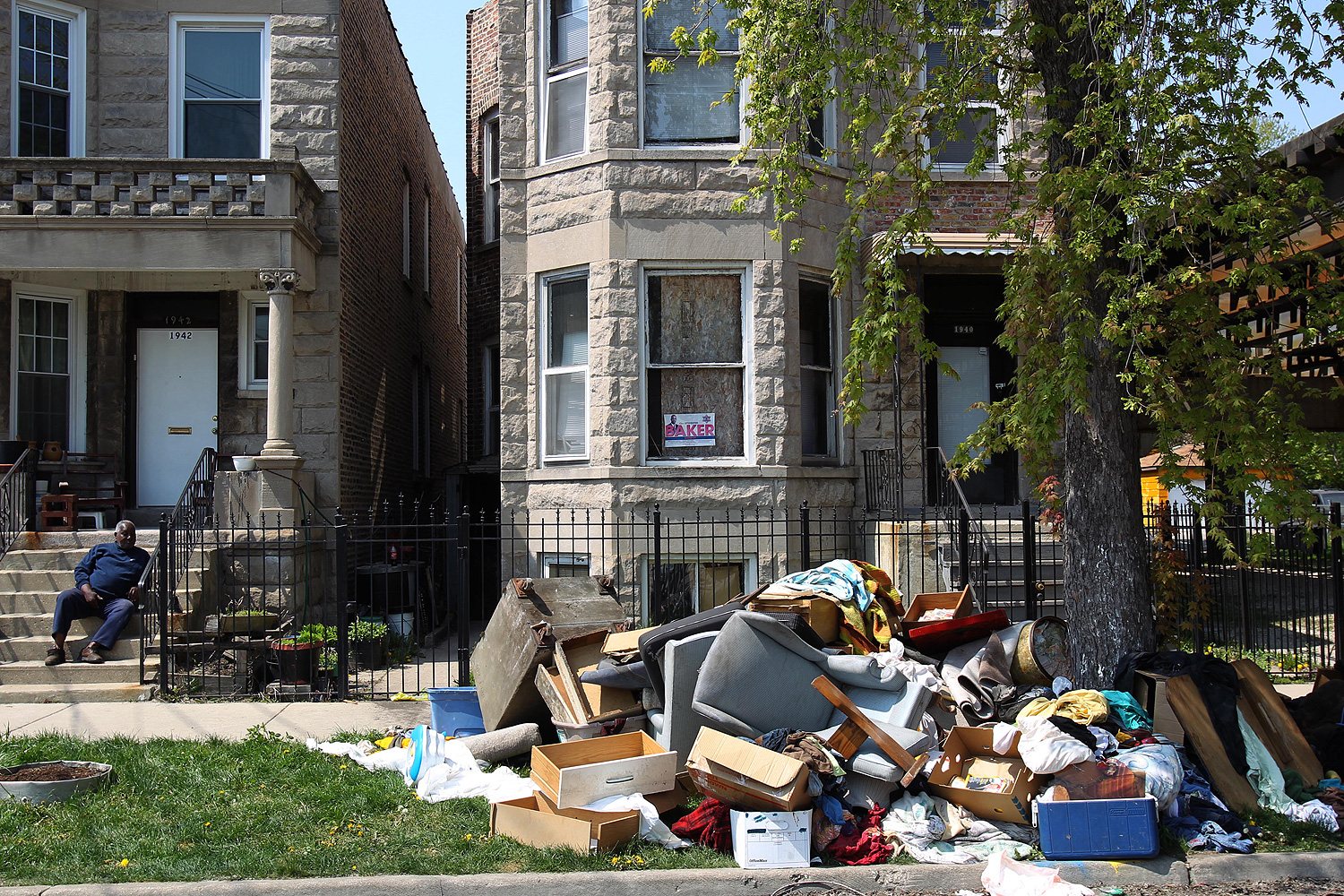I've been reading the work of U. of C. master's student/blogger Daniel Kay Hertz for awhile, so it was encouraging to see his work get picked up by The Atlantic Cities, The Urbanophile, CBS Chicago, and… the Drudge Report, I guess (traffic!). Specifically, his post "Watch Chicago's Middle Class Disappear Before Your Very Eyes," which has been impressively making the rounds.
For good reason: watching the city's middle-class neighborhoods—literally watching it in an animated GIF, perhaps academic journals of the future will have to use flipbooks—give way to swaths of both low- and high-income populations is fascinating and disconcerting. Having depicted it, Hertz puts out a call for comment:
I feel relatively comfortable telling the story of how Chicago came to be so segregated by race; I’m much humbler about my ability to explain this, except inasmuch as the ever-widening ghetto of the affluent could not exist without, yes, radically exclusionary housing laws, and I will take that up separately in another post. In the meanwhile, I’ll take a page from Ta-Nehisi Coates and ask you all, if you have some background in this, to talk to me like I’m stupid: what does the literature say about growing economic segregation? Who and what should I be reading?
And an important caveat:
the obvious and immediate reaction to these maps is to see them as a direct consequence of rising income inequality. There is some truth to that, but the researchers from which much of this data came have already discovered that income segregation has actually risen faster than inequality. So that’s not the end of the story.
I think I found something to add to the reading list on this—increasing income segregation as distinct (but not isolated) from inequality. It's from Northwestern sociologist Lincoln Quillian.
Quillian, then at Wisconsin, took a look at data from the Panel Study of Income Dynamics, which, as the name suggests, gives a more fluid look at processes of income, income mobility, and place. From this sample we get a sense of movement by income, and how those concentrations actually concentrate.
What's most striking about Hertz's map is the transition from 1970 onwards; when the map begins, the lowest-income census tracts are extremely concentrated. Then, as if a switch was flipped, they radiate out from the city center by 1980. (It almost looks like watching Conway's Game of Life.) The change in those 20 years is immense. And Quillian gives a clue as to why, laying the groundwork for what was happening before Hertz's analysis begins (emphasis mine):
Modern poor urban neighborhoods, formed after 1970 or so, thus stand in sharp demographic
contrast to poor and minority neighborhoods earlier in the century. Accounts of racial succession of neighborhoods in the 1950s indicate that neighborhoods undergoing racial transition tended to increase in population density, especially in passing through a late phase in racial succession referred to as “piling up,” in which previously white-owned homes and apartments were subdivided into smaller dwellings to accommodate the housing demands of black immigrants (Duncan and Duncan 1957). Although the affluent have always made efforts to segregate themselves from the poor, immigration into cities before about 1970 was proceeding at too rapid a pace to allow inner city neighborhoods to drop substantially in population as part of this process. Indeed, a chief reason blacks desired to exit predominantly black areas of the city before 1970 was because the housing supply in black neighborhoods was insufficient to keep up with demand (Aldrich 1975). With the end of black immigration to urban areas, poor African-American neighborhoods have changed from densely packed communities of recently arrived immigrants to areas gradually abandoned by the nonpoor. The cessation of the flow of black immigrants to the nation’s cities, and the corresponding decline in the population density of poor neighborhoods, may be one unexplored factor responsible for the change in the nature of poor African-American neighborhoods in the early 1970s that Wilson (1987) describes.
The Second Great Migration ends in 1970. To paraphrase Hunter S. Thomson, Hertz's 1970 map appears to be the point where you can see the wave break and roll back.
Quillian's data then picks up the narrative, which adds texture to Hertz's map. Between 1980 and 1990, there's a substantial leap in the lowest-income-level census tracts, then things plateau from 1990-2000. Here's Quillian again:
There is no indication in the PSID data that stayers in black and/or poor neighborhoods experienced increases in their poverty rates in the 1970s and 1980s, except during the recession of the early 1980s. During this recession, increases in the poverty rate among the nonpoor were spatially concentrated in black moderately poor neighborhoods. Since these neighborhoods were already moderately poor to begin with, this suggests that increasing poverty rates in the early 1980s had a strong effect in increasing the number of extremely poor neighborhoods.
Quillian was writing in 1998 (here's another paper from him in 2012, addressing similar issues), but his conclusions accurately foretell the changes you can see from 2000-2012: "Neighborhoods in transition to high-poverty status empty first of whites, then of many middle-class blacks, leaving more-disadvantaged and less-populous areas. The overall result is that high-poverty neighborhoods have been becoming geographically larger and less densely settled."
Perhaps if the city had been less segregated and hostile to integration (as Beverly was, by comparison), the housing stock available to the black middle class would have been greater. Instead, by 1970, the city was in an unstable state, vulnerable to the shock of recession and an exodus of the middle class.



